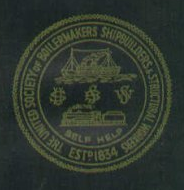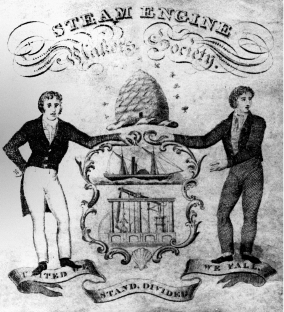Related Research Articles

The Amalgamated Engineering Union (AEU), originally known as the Amalgamated Society of Engineers, was an Australian trade union which existed between 1852 and 1973. It represented engineers, as well as some other metal trades workers.
New Model Trade Unions (NMTU) were a variety of Trade Unions prominent in the 1850s and 1860s in the UK. The term was coined by Sidney and Beatrice Webb in their History of Trade Unionism (1894), although later historians have questioned how far New Model Trade Unions represented a 'new wave' of unionism, as portrayed by the Webbs.

The Amalgamated Engineering Union (AEU) was a major British trade union. It merged with the Electrical, Electronic, Telecommunications and Plumbing Union to form the Amalgamated Engineering and Electrical Union in 1992.
The National Union of General Workers (NUGW) was an early general union in the United Kingdom, the most important general union of its era.

The Amalgamated Society of Boilermakers, Shipwrights, Blacksmiths and Structural Workers (ASB) was a trade union in the United Kingdom. Many of its members worked in shipbuilding, in which industry it was the leading trade union, while over time it also developed strength in engineering and construction.

The Confederation of Shipbuilding and Engineering Unions (CSEU), often known as the Confed is a trade union confederation in the United Kingdom.
The Amalgamated Society of Engineers (ASE) was a major British trade union, representing factory workers and mechanics.

The Manchester Trades Union Council brings together trade union branches in Manchester in England.
Robert Austin was a British trade unionist.

Matthew Arrandale was a British trade unionist and politician.
The Australasian Society of Engineers (ASE) was an Australian trade union active from 1890 to 1991. It was eventually incorporated into the Australian Workers' Union (AWU).

The Steam Engine Makers' Society (SEM) was an early trade union representing engineers in the United Kingdom.
George Peet was a British communist activist and trade unionist.
The United Kingdom Society of Amalgamated Smiths and Strikers was a trade union representing foundry workers in the United Kingdom.
The Amalgamated Union of Upholsterers (AUU) was a trade union representing upholstery workers in the United Kingdom.
The Shop Stewards Movement was a movement which brought together shop stewards from across the United Kingdom during the First World War. It originated with the Clyde Workers Committee, the first shop stewards committee in Britain, which organised against the imprisonment of three of their members in 1915. Most of them were members of the Amalgamated Society of Engineers (ASE). In November 1916 the Sheffield Workers Committee was formed when members of the ASE there went on strike against the conscription of a local engineer. The government brought the strike to an end by exempting craft union members such as ASE engineers from military service. However when this policy was reversed in May 1917, this met by a strike involving 200,000 workers in 48 towns. The Shop Stewards Movement arose from organising this strike.
James Gorman was a British politician and trade unionist.

The Amalgamated Association of Tramway and Vehicle Workers (T&VW) was a trade union representing workers on public transport in the United Kingdom.
The Amalgamated Instrument Makers' Society was a trade union representing workers involved in manufacturing scientific instruments in the United Kingdom.
The Notts Trades Council, formally known as the Nottinghamshire Nottingham and Mansfield Trades Council, brings together trade unionists in Nottinghamshire, in England.
References
- 1 2 3 4 Arthur Marsh and Victoria Ryan, Historical Directory of Trade Unions, vol.2, p.64
- ↑ "Prospective vacancy in the representation of Ardwick ward", Manchester Guardian , 5 March 1891
- ↑ "United Machine Workers: An extension of scope", Manchester Guardian , 19 June 1916